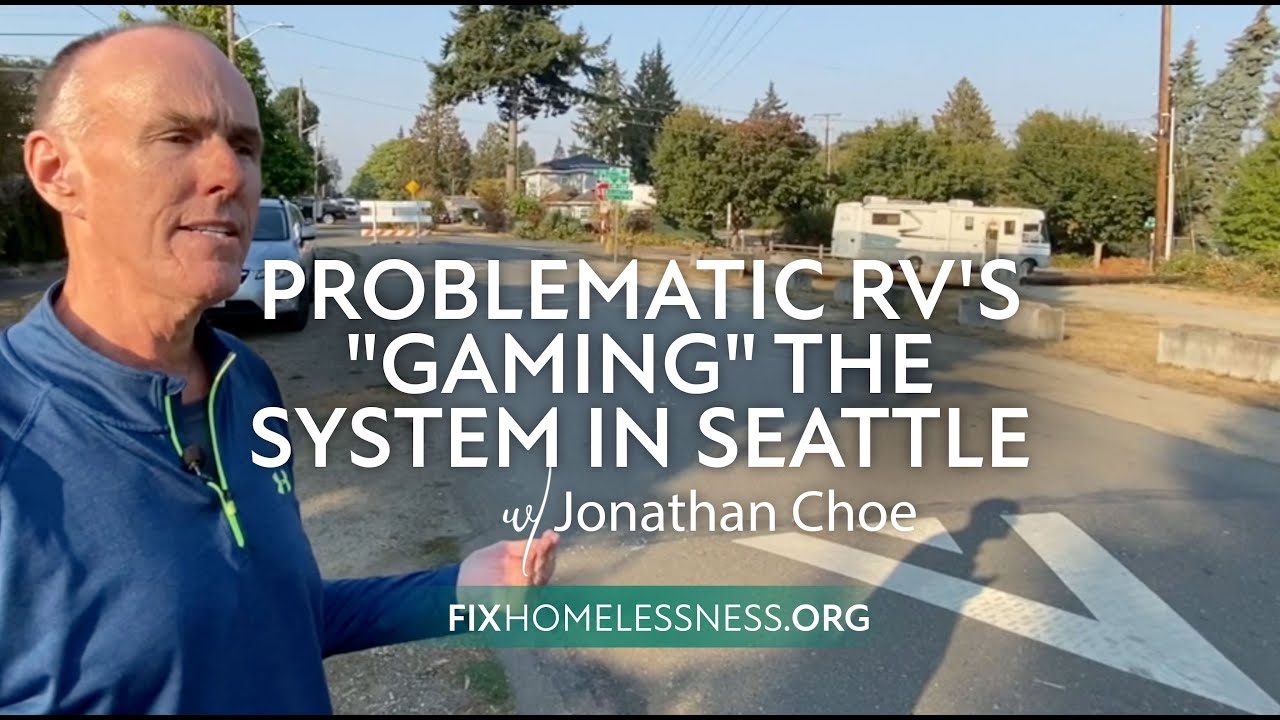Problematic RV’s “Gaming” the System in Seattle
Published at Fix HomelessnessThe advent of Thanksgiving brings more stories about homelessness and more debate about its causes. Some advocates emphasize housing costs, as New York’s Charles Brace did during the Civil War era (see my May 3, 2024 column.) Others emphasize substance abuse and mental illness. That also is nothing new: New York City suffered not only through draft and racist riots in 1863 but homelessness in the 1870s, often among Civil War veterans suffering from what today we call PTSD, post-traumatic stress disorder.
The debate, even then, was not new. Starting early in the century, the street-level analysis was that some poor people became paupers — not just poor, but distraught and defeated — by getting drunk and staying drunk. What percent of paupers were alcoholics? The verdict from the Baltimore Alms House: Three-fourths. Philadelphia officials in 1827: “three-fourths to nine-tenths.” American Quarterly Review: nine out of ten.
Other estimates were similar. Scholar Samuel Austin Allibone was sarcastic about a book that expressed love for the poor but did not discuss alcoholism, to which he attributed three-fourths of pauperism. Those problems predated the Civil War. In 1852, a Connecticut legislative committee surveyed 132 of the state’s towns and found alcoholism to be the major reason why some among the poor gave up and became paupers. A New York legislative committee in 1857 found alcoholism in the backgrounds of 70% of paupers.
Problems grew after the war. Many veterans treated their pain with alcohol and/or opium and slept in the Water Street/Fourth Ward area of southeast Manhattan, often in pits that turned into salty pools when the tide rolled in. They often co-existed with desperate prostitutes huddled in basements. The Water Street way of life was perhaps best symbolized by its most famous attraction, the Kit Burns Rat Pit at 273 Water Street, a combination bar and amphitheater where dogs fought rats while men laid down bets. Hollering in the arena was heavy as Burns turned loose one dog and as many as 100 rats, with wagers placed on the rate of rat death. Burns also had a son-in-law who occasionally jumped into the pit and fought the rats. Another Burns battler was a six-foot Englishwoman known as Gallus Mag, who, when angry, bit off the ears of those she didn’t like and displayed her trophies in a jar of alcohol.
Charity leaders debated how to help the Rat Pit regulars. They questioned optimistic views of human nature — everyone naturally wants to work — and criticized local welfare programs that offered material support without challenge. The New York State Board of Charities warned that “when persons, naturally idle and improvident, have experienced for a few months the convenience of existing upon the labor of others, they are very likely to resort to this means of living as often and as continuously as possible.”
In 1879, the New York Board reported that passing out vittles and supplies to those capable of working was “injurious and hurtful to the unfortunate and worthy poor, demoralizing in its tendencies, a prolific source of pauperism and official corruption, and an unjust burden upon the public.” In 1884, the Board returned with another report that said material distribution to those capable of working ended up “increasing present and future want and vice.” Officials in Rhode Island, Pennsylvania, and Ohio similarly complained that pay without work “tends rapidly to undermine habits of industry, economy, and self-reliance.”
Since it was hard to escape homelessness, those who did often emphasized their thanksgiving. One young man, writing to Charles Brace in 1871, described how he had been “a vagrant, roaming over all parts of the city. I would often pick up a meal at the markets or at the docks, where they were unloading fruit. At a late hour in the night, I would find a resting place in some box or hogshead, or in some dark hole under a staircase. [I would climb] upon houses to tear the lead from around the chimneys.”
The writer described how he spent two years in a lower Manhattan homeless shelter and then headed to Indiana. I won’t go through the whole story here, but he then went to Yale and concluded his letter by writing, “To be taken from the gutters of New York City and placed in a college is almost a miracle.” Miracles are a gift from God. Those who serve Him can help to bring about almost-miracles. That’s one reason why it’s important on Thanksgiving to say not “thanks,” but “thank you,” and especially, “thank You.”
